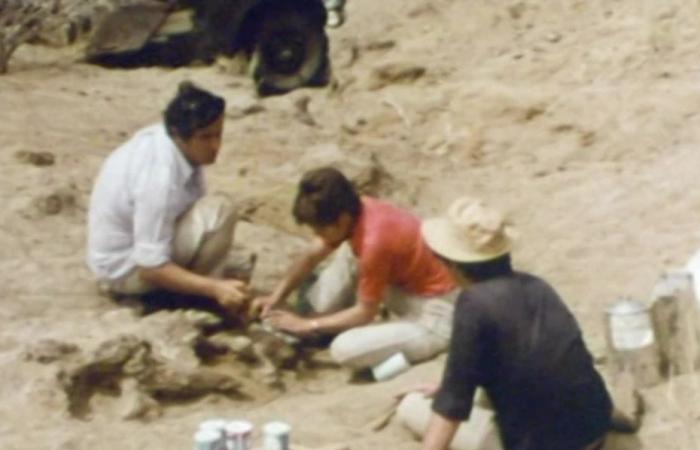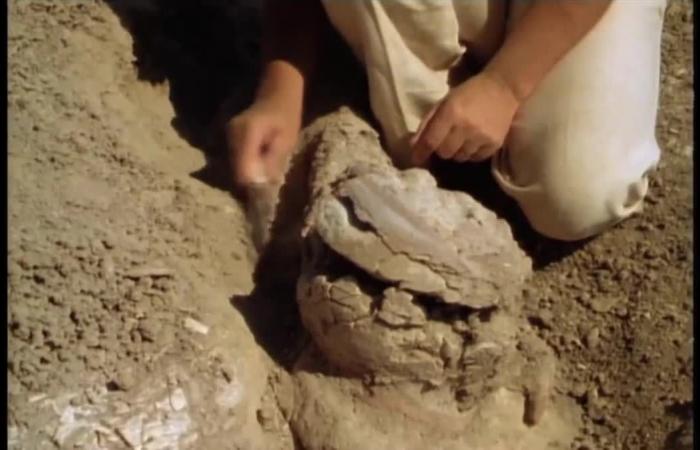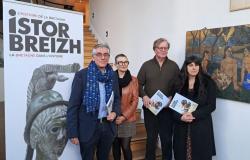50 years ago to the day, on November 24, 1974, in the Afar region of Ethiopia, Breton Yves Coppens and a team of researchers discovered bones more than 3 million years old. 52 fragments which outline the silhouette of a small woman, barely 1 meter tall, weighing less than 30 kilos. This is Lucy, our great-great-great-grandmother.
The essentials of the day: our exclusive selection
Every day, our editorial team reserves the best regional news for you. A selection just for you, to stay in touch with your regions.
France Télévisions uses your email address to send you the newsletter “Today’s essentials: our exclusive selection”. You can unsubscribe at any time via the link at the bottom of this newsletter. Our privacy policy
Its skeleton had remained buried beneath sediments for thousands of years. And then, on November 24, 1974, a first small piece of the fossil was seen on the slope of a ravine on the banks of the river. Awash, Ethiopia.
The banks of the Awash River in Ethiopia where Lucy was discovered.
•
© WHEN
Nearly 3.2 million years later, Lucy, our australopithecine ancestor resurfaced.
52 bone fragments which make up 40% of its skeleton allowed us to better understand our evolution and to affirm that from this time, men could move on their two legs, but were also capable of moving in trees.
duration of video: 00h03mn29s
report by K. Veillard; T. Bouilly; L. Decarsin and JF Barré
•
©France 3 Brittany
In the team of scientists examining the dunes, there is the young Breton Yves Coppens. He grew up in Vannes, very close to Carnac, and very quickly became passionate about prehistory and archaeology. All his vacations are taken up by excavation sites.
Yves Coppens was part of the team of researchers who discovered Lucy.
•
© WHEN
On his 20th birthday, busy working on a mound, he refused to return home. It’s his family who will have to travel so that he blows out the candles on his birthday cake !
The discovery of this little woman shakes up science but also man. He remembers his baptism fondly : “It was initially called “AL 288”, it’s not very elegantYves Coppens readily recounted. And then in the evening, we mark fossils so as not to lose them so we put “AL 288-1”, “AL 288-2″ with a little varnish on top and doing that, which is not very funny, we listen to music and the day we found the half-pelvis we said to ourselves that what’s more, it’s a girl. And ‘AL 288’ became Lucy because we were listening to a Beatles tape.”
An international team of researchers was mobilized to carry out excavations in Ethiopia.
•
© WHEN
In Ethiopia, the little skeleton is called “Dinqnesh” “you are wonderful”, or “Hemophilia which means, “she’s special.”
Lucy died at the age of 25. By observing the fractures of his bones, some scientists hypothesize a fatal fall from a height of 12 meters. Others believe that these fractures could have occurred after his death.
50 years after its discovery, Lucy retains part of its mysteries.
Lucy’s skeleton
•
© WHEN
Since then other discoveries have been made. Even older ancestors, like Toumaï, have completed our family tree but little Lucy retains a special place.
His skeleton (a molding of which is presented at the Natural History Museum) rests at the National Museum of Addis Ababa in Ethiopia.
(With Krystel Veillard)







